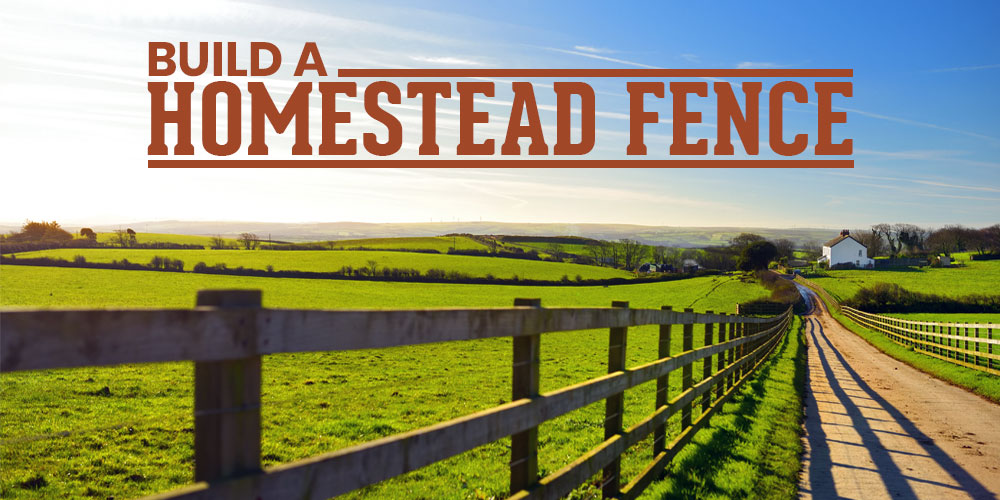
NAVIGATION
Fencing is a vital fixture on any successful homestead. Building a homestead fence on your own can seem like a huge task, but when you break it down, anyone can put up a simple, sturdy wood or wire homestead fence.
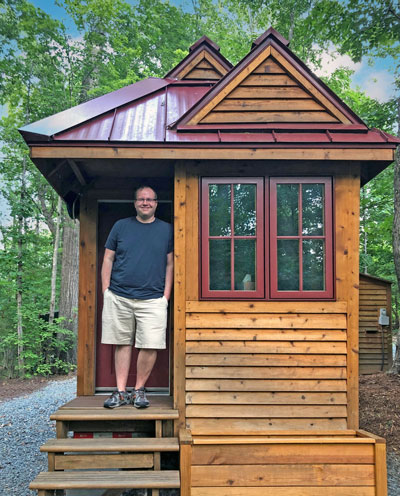
Hi, I’m Ryan
After living and working on my own homestead for a decade, I’ve gained insight into what elements are essential. Adding a fence to your homestead is a must for beginners and experts alike!

Building A Homestead Fence: Where To Start

I definitely know what it’s like to be a beginner at homesteading. I’ve been working on my own homestead with my girlfriend and pets for about 10 years now and have learned more about farming, building, gardening, and tending to livestock than I ever imagined would be possible. However, in no way did I start out as an expert.
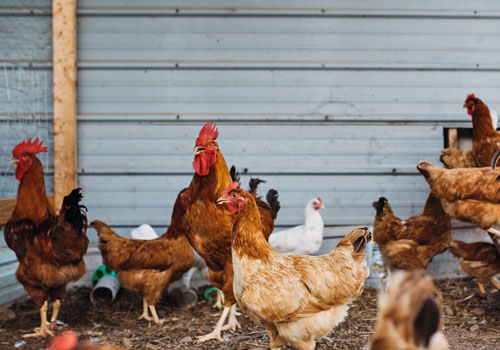 It all started with chickens — the gateway animal as we like to call them. At one point we had 25 or so of them running around our humble suburban backyard. After getting a solid handle on chicken management, we added turkeys and quail to our motley crew. We had officially been bitten by the homesteading bug!
It all started with chickens — the gateway animal as we like to call them. At one point we had 25 or so of them running around our humble suburban backyard. After getting a solid handle on chicken management, we added turkeys and quail to our motley crew. We had officially been bitten by the homesteading bug!
With all that livestock running around, I knew I’d need to get a handle on homestead fencing. The thought of building my own fence was daunting at first, but I had to have some way to keep those birds safe on my land.
I’m a huge believer in the idea that anyone can learn to build things themselves if they take the time and learn to do it right. Doing things yourself is a huge part of what homesteading is all about! So, I dug into all the resources I could, grabbed my tools, and dove right in.
I also had the chance to speak with my friend and rancher Jason Gemeiner about all things fencing and homesteading. Like me, Jason started out as a beginner in the realm of fence building, but you’d never know it today.
He has built several fences around his homestead for all kinds of purposes and shares his expertise on his YouTube channel, From Scratch Ranch. Jason had some pretty valuable insights during our chat regarding how to build the best fence for any homestead.
I learned a ton about the fence building process worth sharing. This guide will help you make decisions regarding the material you need to build a fence, the type of fence you’re building, fence length, posts, and bracing. Don’t forget to brush up on your building skills to help you get your fence successfully in the ground.
Identify The Purpose Of Your Homestead Fence

My best suggestion is to start small with what you know for sure, then work toward tackling the more complicated parts of the building process. The most important thing to consider before building a fence on your homestead is the purpose of your specific fence.
The advice I give my friends who are homesteading beginners is to break things down into two categories. Ask yourself: Is my fence being used to keep animals in or predators out?
Build A “Keep Out” Fence For
- Sheep and Goats
- Chickens
- Vegetable or Flower Gardens
- Field / Land Perimeter
Build A “Keep In” Fence For
- Horses
- Cattle
- Sheep
- Chickens
Plan Out The Details Of Your Homestead Fencing

Once you have identified the main purpose of your fence, you’ll need to consider all of the details that support that purpose.
Ask Yourself the Following Questions
- How many acres am I trying to surround?
- Will there be livestock in the fenced off area? What kind?
- Will there be crops or plants in the fenced off area? What kind?
- What type of soil is on my land?
- Is anything in the way of the fenced off area (trees? debris? pipes?)
- Do I want smaller sections partitioned within the main fenced off area?
- Will I need to do anything to prepare the land before building?
Wood Or Metal Posts For Your Homestead Fence?

Another one of the most important preliminary questions to ask yourself when planning your homesteading fence is whether you plan to use wood or metal to build your posts and rails.
One of the biggest advantages to using steel posts paired with metal wiring is that steel is extremely easy to use and highly durable. Additionally, if you buy steel posts at a hardware store, it’s likely that they’ll come with easy-to-use wire clips that attach the actual fence wire.
There are also lots of advantages to using wooden posts and rails to create your fence. Both wooden posts and rails come in a wide variety of sizes and types, which you can pick up from your local hardware store. If you’re feeling like an extreme DIYer, you can cut down trees on your own land and repurpose the wood for your fence.
“Cedar is one of the best types of wood you can use. It’s naturally insect and rot resistant. It’s one of the more expensive wood types to buy at the store, but if you have access to cedar trees, that’s the best way to go.”
– Jason Gemeiner, From Scratch Ranch
Quality Woods For Fence Posts Include
- Locust
- Cedar
- Mulberry
- Osage Orange
- Douglas Fir
- Redwood
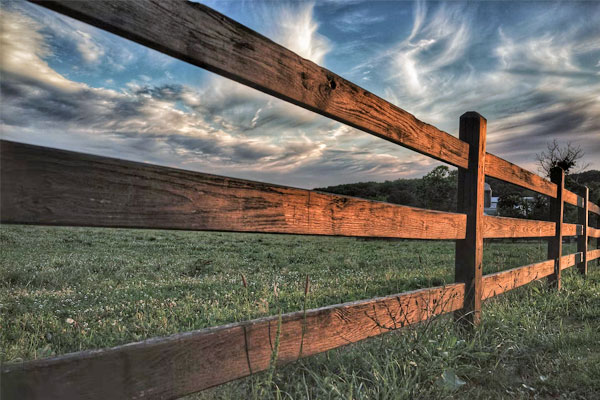
| Metal Fence | Wooden Fence |
|---|---|
| Resistant to moisture | Prone to moisture damage |
| Requires very little maintenance | Requires extra maintenance |
| A challenge to install, more complicated building process | Simple to install, easy for beginner DIY |
| More of a challenge to paint or change look over time | Easy to paint or change look over time |
| Costs more | Costs less |
Types Of Wire Fencing: How To Choose

When it comes to wire fencing materials, there are tons of options, each with their own advantages and disadvantages. I’ve taken the liberty of compiling the pros and cons of each type of fencing wire to help you decide which will work best for you on your homestead fence.
Chicken Wire
On my own homestead, I have a chicken coop to house my poultry, but you don’t necessarily need one. You can easily keep your chickens in a well-maintained field surrounded by chicken wire.
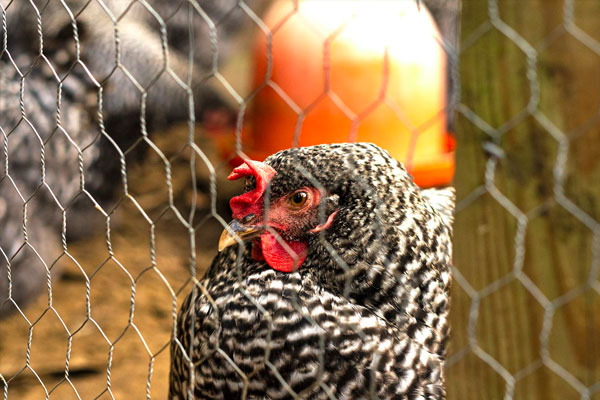
Barbed Wire
Barbed wire is definitely a “keep in” type of wire. It works by keeping livestock away from the fence edge but does little to keep predators and other wildlife off of your homestead.
Due to the fierce features of barbed wire, it’s imperative that you check on zoning regulations for the city and county that you live in. In most highly rural areas, you should be okay, but in some partially rural areas, barbed wire may be against code.
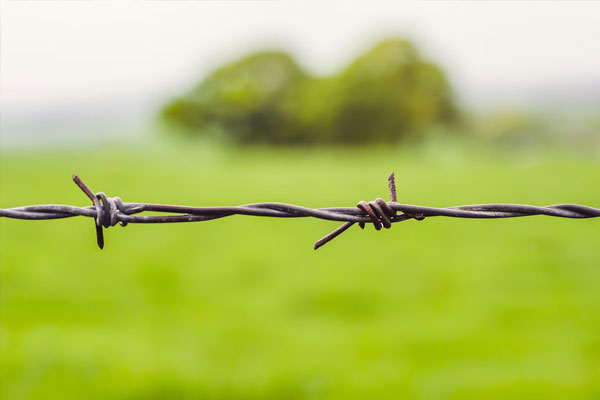
High-Tensile Wire Fences
You can also line the rails with wiring to keep the animals from escaping or causing damage to your fence. For example, you could line the inside of the rail fence to keep larger animals from leaning against the railing.
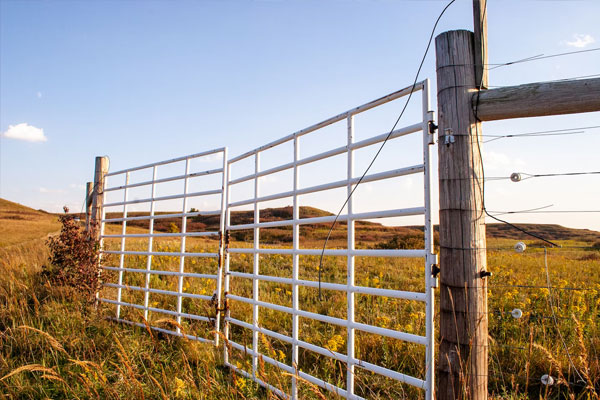
Welded Wire
Most welded wire fencing is made from 16-gauge or 14-gauge wire that can be found at any local hardware or farm supply store. When using welded wire of any kind, be sure to think about the gauge you’ll need.
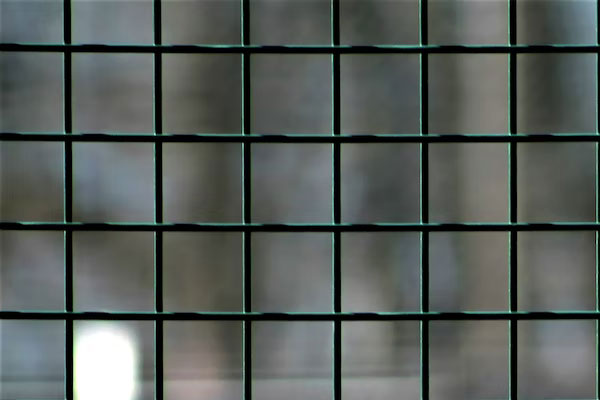
Field Fence
Field fences are similar to welded wire due to the way that they’re structured and arranged in grid form with vertical and horizontal wire rows. The main difference between welded wire fencing and field fencing is that welded wire fences are welded together at the joint, while field wire is crimped.
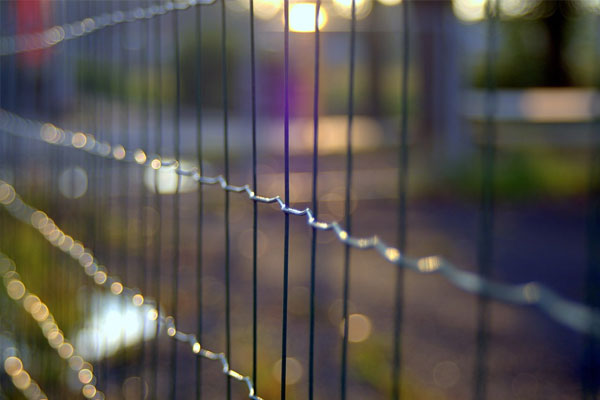 There are a few different note-worthy variations of field fences. The first type is a hinge-joint knot fence, which reinforces each intersection by wrapping vertical wires around the horizontal wires. In contrast, fixed knot fences are reinforced from both direction, which prevents sliding.
There are a few different note-worthy variations of field fences. The first type is a hinge-joint knot fence, which reinforces each intersection by wrapping vertical wires around the horizontal wires. In contrast, fixed knot fences are reinforced from both direction, which prevents sliding.
You can also try the third type of field fence, the woven field fence. This fence type contains interwoven wires that create a knot and gives the fence leeway to wave back and forth as livestock push against it.
Woven field fencing is, in my opinion, one of the best types to use on a homestead when trying to protect your livestock. The spring wiring can be extremely helpful for confining antsy livestock like pigs, sheep, and goats.
Snow Fence
This makeup is extremely helpful when trying to protect your livestock or crops from harsh winters because the wire mesh can break the wind and block snow.
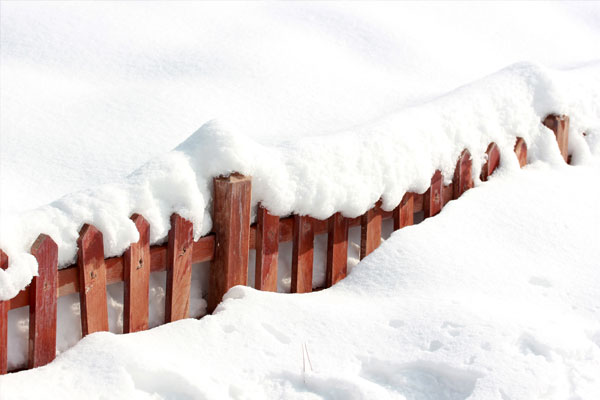
Electric Fencing
If you’re down for the extra labor it entails to connect fencing to the grid or an off-grid power source, then electric fencing may be the way to go on your homestead. While electric fencing may not be the most aesthetically pleasing to the eye, it certainly deters livestock and predators from getting in or out of the fence perimeter.
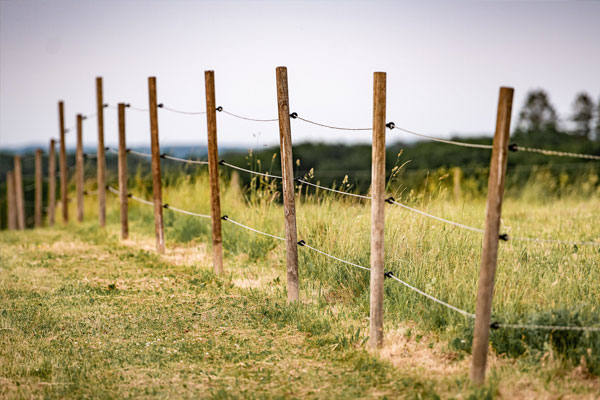 The safety of electric fencing is a highly debated topic in the farming community. However, many farmers agree that when handled ethically and with caution, electric fencing is safe and effective. When handled incorrectly, electric fencing can be harmful to your livestock.
The safety of electric fencing is a highly debated topic in the farming community. However, many farmers agree that when handled ethically and with caution, electric fencing is safe and effective. When handled incorrectly, electric fencing can be harmful to your livestock.
It’s important to handle all electric fencing safely and with caution for the sake of your animals and any children that may be playing on or near your farm.
Electric Netting / Electric Poultry Netting
Electric netting is more expensive than other styles, but is good for when you need to build a temporary enclosure or when you need to move your pen often. It’s often used with chickens to move them through a field or in a paddock system.
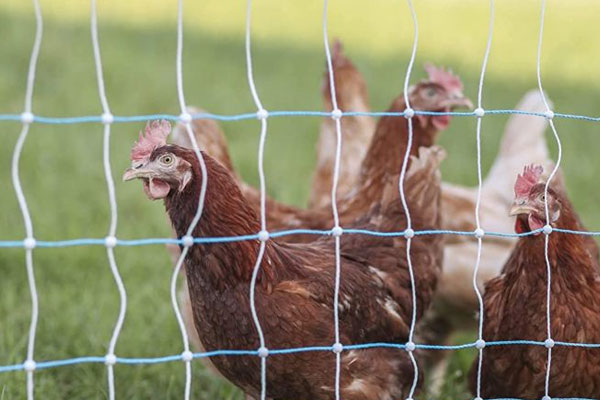
Best Fencing Options For A Garden

The primary goal with any garden fence is to protect your plants from predatory bugs and small animals that may be after your crops. One great thing about garden fencing is that it tends be pretty inexpensive.
Best Fence Material For Vegetable Garden

When planning material for a vegetable garden, you’ll want to look for material that is durable and rust proof. Your garden needs lots of water to thrive, but you don’t want that moisture to ruin your fencing. You’ll also want to choose a fencing material that is specifically designed to keep out predators.
Top Fence Materials For A Garden
- Woven Wire
- Welded Wire
- Stock Panel
- Chicken Wire
- Chain Link
- Hex Netting
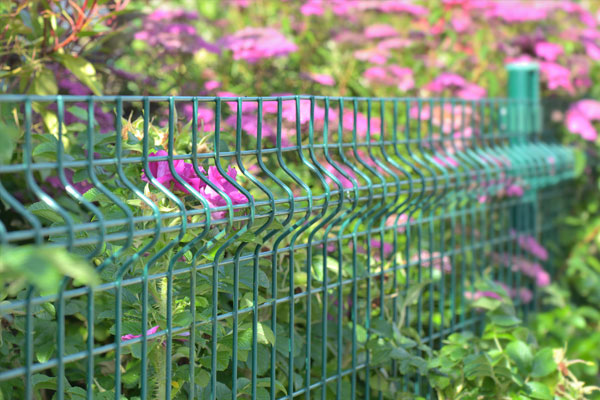
Fencing To Keep Wildlife Out Of Gardens

It’s absolutely vital to consider wildlife and predators when putting fencing around a garden. The last thing you want to do is invest money in a fence that doesn’t keep your crops safe from hungry critters.
Do some research into the types of animals that live in your area and what types of crops they look for. If any of the local wildlife has your planned plants on their menu, create a gameplan to keep those creatures out of your crops.
Another pro tip is to use garden netting to surround your metal fence as an extra wildlife barrier. I’ve linked some top-notch fencing and netting products to help you keep your garden safe from critters.
Fencing And Netting To Keep Wildlife Out Of Gardens
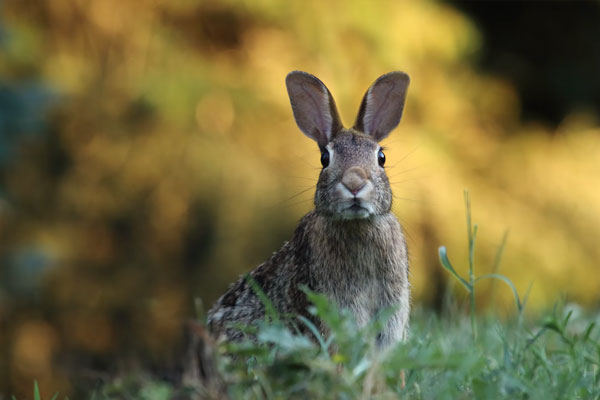
Best Fencing Material For Livestock

Each type of livestock on your homestead is going to have different needs when it comes to a fence. You’ll want to consider the needs of each specific animal and choose fencing that works best with each type of livestock.
Ideal Fencing Option For Chickens

Many people will say that chicken wire is the best type of fencing to use for chickens, thanks to the name. However, in my opinion, chicken wire isn’t really the best option for chickens. I find welded wire to be the best fencing material for chickens or a chicken coop. It’s ideal for keeping out predators, it’s more durable than chicken wire, and it’s fairly lightweight.
Material To Use For Cattle Fence
When building a fence for cattle, you’ll want to choose a wire type that is resistant to breaching and will be strong enough to keep your cattle from breaking through the wire. I’ve found that the best type of fencing for cows is a fixed knot fence, but I also know people who have used barbed wire or hinge joint fencing.
Best Fencing Option For Horses

The best type of fencing for horses is mesh wire fencing. The goal with horse fencing is primarily to keep your foal from running off of your land, but you also want to use a material that is safe for your livestock. Mesh wire fences are highly durable but are also safe for horses to lean against.

“I always make sure to keep my horse fencing height at 4 feet, 6 inches minimum. Our horses are trained to jump, and some of them are trained to jump three or more feet.”
– Jason Gemeiner, From Scratch Ranch
Ideal Fencing For Sheep And Goats


There’s some pretty substantial debate over which type of homestead fencing is ideal for goats and sheep. Many farmers argue that woven wire is the best type of fencing for sheep, while others use barbed wire. Personally, I feel like woven wire is the way to go with sheep because it is much more successful at keeping predators away from your animals.
How To Build Homestead Fencing In Four Steps


When it comes to actually building a homestead fence DIY style, there are several steps you’ll need to take to get your fencing up to par. There are also several tools you’ll want to make sure you have before you begin.
“One tool I would definitely make sure you have when building a fence is a San Angelo digging bar. Every time I encountered thick limestone or a tough clay area, I’d slam the digging bar down in the ground to bust up tougher land.”
– Jason Gemeiner, From Scratch Ranch
Tools Needed To Build A Homestead Fence
- Auger
- Screwdrivers
- Claw Hammer
- Wire Cutters
- Pliers
- Heavy-Duty Protective Work Gloves
- Circular Saw
- Digging Bar
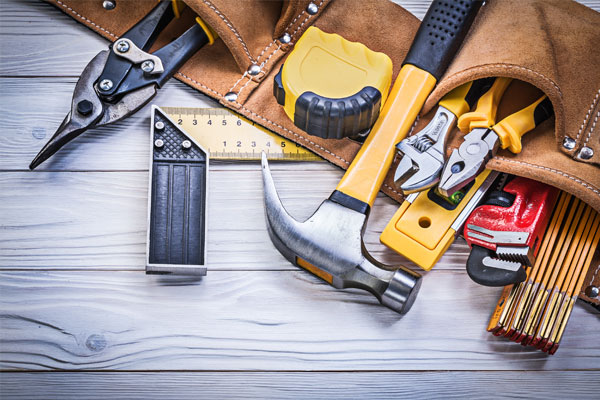

1Mark Homestead Fence Spacing
Mark off both the run of the actual fence line as well as the post holes, and make sure they’re evenly spaced. My best suggestion is to drive stakes into the ground at the corners and ends of your fence. Then, stretch a heavy piece of plastic string or garden twine between the stakes, and pull it tight to release any slack. Let this line be your guide to mark your fence post holes evenly.
The spacing of your post holes should depend on the width of your fence rails and the method you’ve chosen to attach your rails and posts. The average spacing between fence posts is eight to 12 feet, give or take.
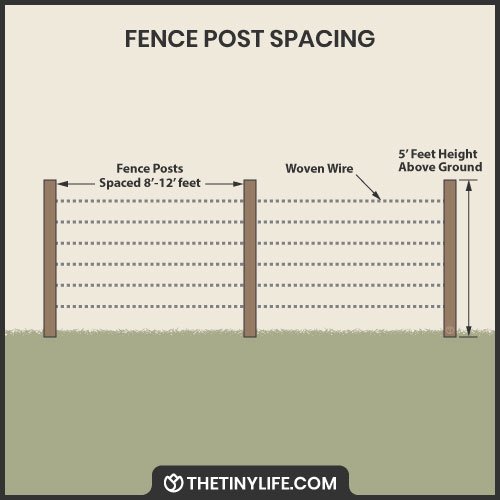

2Dig Fence Post Holes
If you don’t own an auger or a tractor, don’t sweat it! There are several hardware stores that will let you rent a tractor and auger, or you can buy a cheaper, hand-held auger from any major hardware store. You can also use a simple clamshell digger if you don’t have a tractor. However, I wouldn’t recommend this route for large areas of land.
A general rule of thumb to follow when digging your fence post holes is to dig each hole one-third as deep as the fence is tall. If you’re installing a 9-foot fence, your post hole should be at least 3 feet deep.
The hole should always be wider underground than it is above ground. If your hole is smaller at the bottom, this gives the post too much room to lean and can cause your fence to fall.
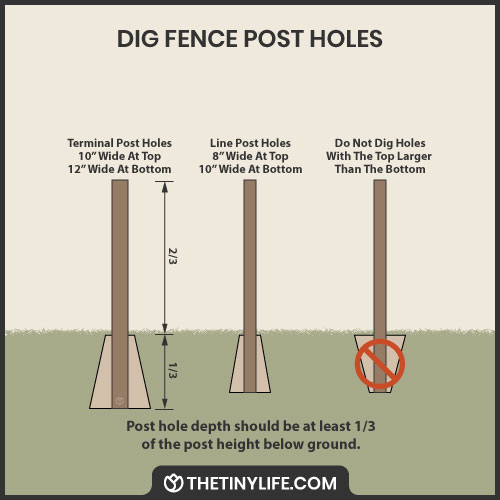

3Set Corner And Gate Posts
Adding a gravel layer helps keep water out of the fence posts over time, as the gravel will soak up groundwater drainage. This is especially helpful if you’re using wooden posts, which are more prone to water damage.
To ensure that your fence will stay straight as you build, set the corner posts first. Keep in mind that the concrete will set in 20 to 40 minutes. Under normal curing conditions, you should apply heavy weight to the post for at least four hours after the concrete has set.
You can also set your posts with dirt instead of cement or concrete, should you prefer it. If you choose to set your fence posts in dirt or mud, layer the dirt around the post by tamping until the hole is filled.
Shovel any remaining mud or dirt around the base of the fence post to create a mound. This will help funnel water away from the hole.
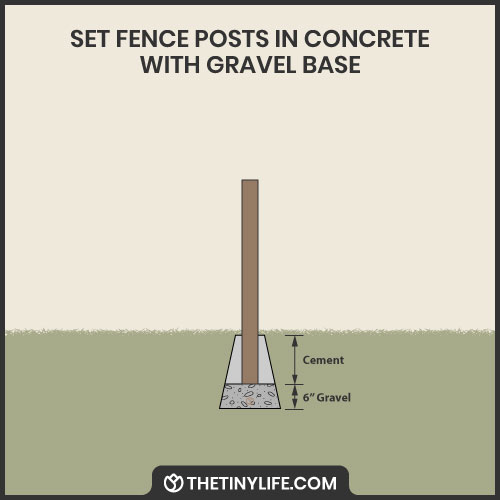






“Honestly, I don’t like to use concrete on the bottom of my post holes. Lots of homesteaders like to use concrete for posts, but it traps moisture and water in the post. Dirt and gravel work better to drain moisture.”
– Jason Gemeiner, From Scratch Ranch
4Brace And Anchor Your Fence
Corners have two different forces pulling in different directions, so you need to resist that pull and keep your corners stout. Gates and other openings not only have the fencing or wire pulling against it, but the weight of the gate wants to pull the post out of alignment.
There are a couple of different methods to try when anchoring wire to your fence posts.
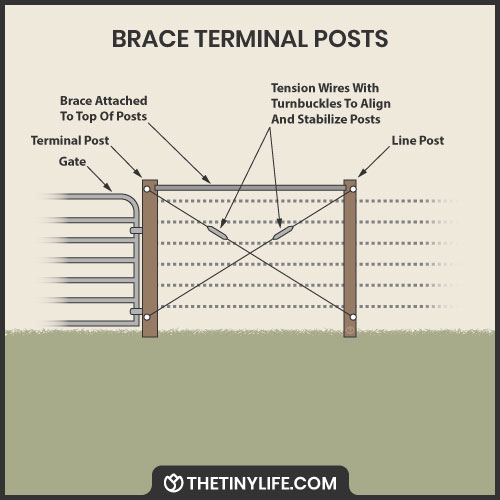

When I was building my own homesteading fence, I ran the wire onto itself and then wrapped the entire line around the fence posts several times. Then, I used basic staples to anchor the wire to the post.
There are a lot of opinions on “the best way” or “the right way” to brace, so figure out what works best for you. Bracing typically involves your last two posts in the line and either tensioning with wire via a turnbuckle or notching your posts to put in a cross post, then tightening down with wire.
Common Mistakes While Building Homestead Fencing


When building your own fence, you want to ensure that you create something that will last. I’ve noted a couple common mistakes that homesteaders run into with fencing that can easily be avoided on the front end.
Using Trees As Fence Posts
Using living trees as fence posts complicates things pretty quickly. Trees move with the ground, shift weight, can crack, and take on new shapes as they grow. They aren’t a reliable source to hold up a fence because you can’t predict the way they will move, which can easily damage your entire fence. Building or buying your own wood posts is the way to go.
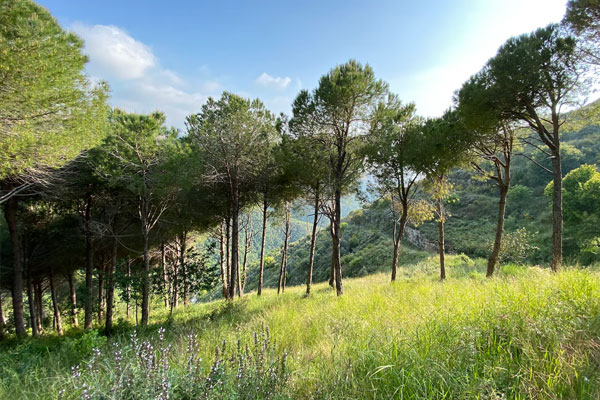






“If you’re in a space for 10, 20, 30 years — those trees are going to push on the fence and cause problems. You could use a tree for temporary fencing, but nothing permanent.”
– Jason Gemeiner, From Scratch Ranch
Using The Wrong Fence Material
Like I said before, one of the most vital parts of building a fence for a homestead is using fencing material that supports your purpose. Whether you’re trying to keep a garden safe, keep horses from running away, or protect a flock of sheep, each purpose will need a different fencing material. It’s best to do your research on the front end and make the right decision from the get-go.
Building A Homestead Fence That Won’t Last
Right from the start, strive to create something durable. There are so many factors that can damage a fence over time: weather, uneven ground, animals leaning, erosion, and more. Making sure that you set your posts in a way that keeps them secure, using strong, lasting material, and keeping up with fence maintenance are all key.
“The best way to give your fence a longer life is to use the right type of wood. Make sure any posts you buy are chemically treated both for wet weather and for ground contact. You can look for this type of treated wood at any local hardware store.”
– Jason Gemeiner, From Scratch Ranch
How Much Does Homestead Fencing Cost?


The total cost of a fence on a homestead is highly dependent on the type of material you use and the amount of land you want to cover. However, if you do it well, it will likely be a fairly expensive project.
Today, fencing in a 1- to 5-acre homestead with just wire and wood alone can cost anywhere from $5,000 to $20,000, depending on the type of fence you want to install. Building an electric fence that’s just ribbon and wire actually ends up being more frugal, closer to $2,000 or $3,000 per acre.
| Fence Type | Cost Per Foot | Cost per mile |
|---|---|---|
| Barbed | $1.48 | $7,814 |
| Chicken | $0.89 | $4,699 |
| Welded wire | $1.03 | $5,438 |
| Woven Wire / Field Fence | $1.93 | $10,190 |
| Electric | $0.89 | $4,699 |
| High-Tensile Wire (non-electrified) | $1.24 | $6,547 |
| Electric Netting | $2.40 | $12,672 |
| Board / Rail | $16.52 | $87,225 |
Post And Wire Fence Cost Comparison Per Foot
Each type of fencing material is going to cost something different per foot. My best advice when budgeting for such a huge project like this is to determine a budget beforehand.
It’s important to create a budget up front so you know exactly what you can afford as you start to plan. Check out this chart to compare different types of fencing material to work into your budget.
When it comes to saving money, you kind of just have to bite the bullet with a project like this. One way to cut cost up front without reducing quality is to buy land that already has fencing on it. Even if it’s not the specific fence type you need, it’s cheaper to repair or modify a fence than it is to start from scratch.





“It’s going to cost some money, but you want to do it right the first time, even though it might cost more. Install the right type of fencing up front so you don’t have to constantly repair and replace your fence.”
– Jason Gemeiner, From Scratch Ranch
Get Started Building Your Homestead Fence
In a nutshell, before you start building your fence, be sure to plan your materials, prepare a budget, and do research around the soil types and animals in your area. Knowing these things is the best way to set you and your fence up for success.
- What kind of materials do you think you’ll use to build a fence on your homestead?
- Is the purpose of your homestead fence to keep animals in or predators out?





Leave a Reply